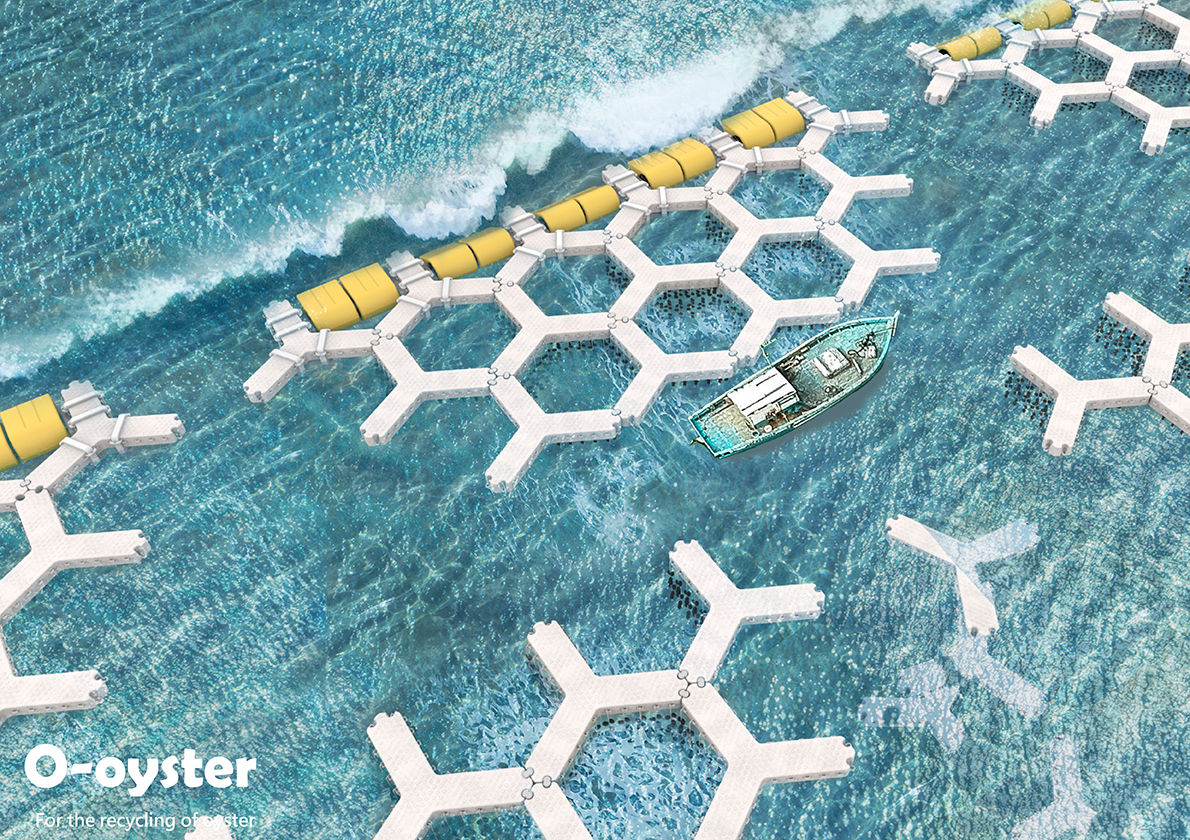
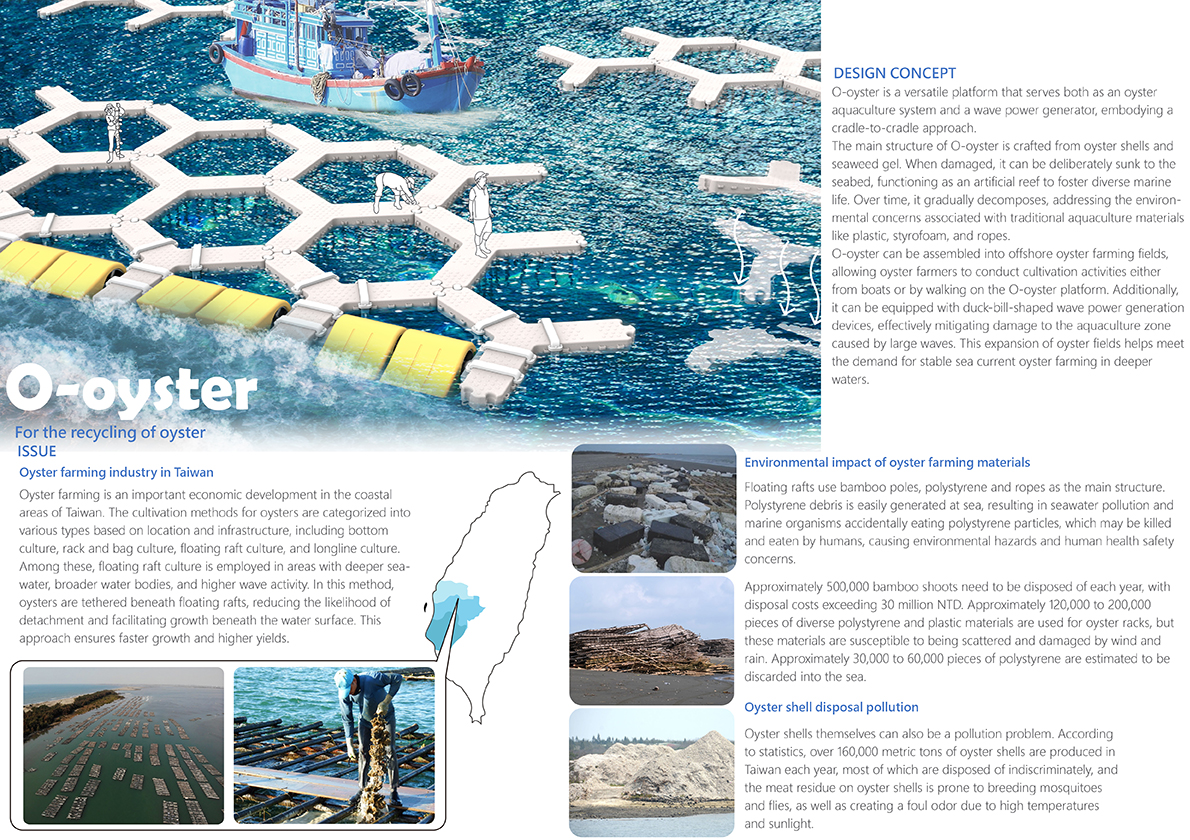
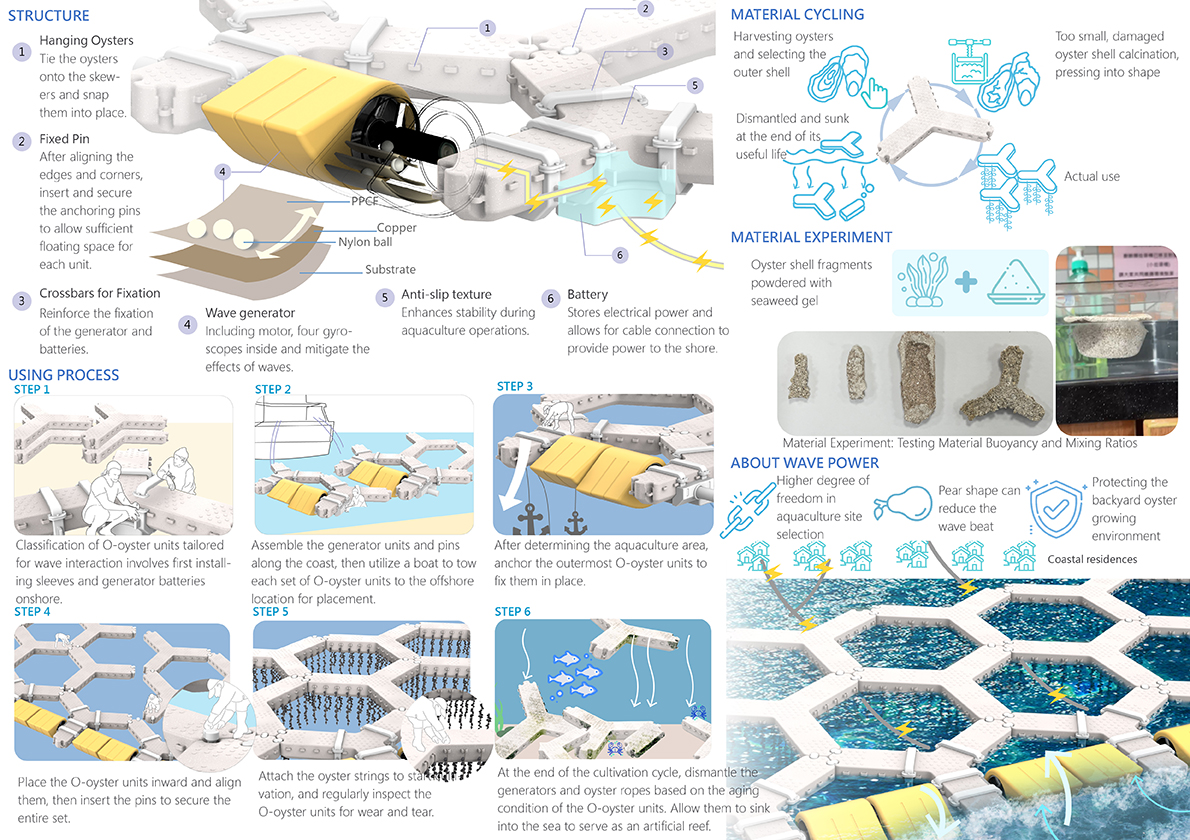
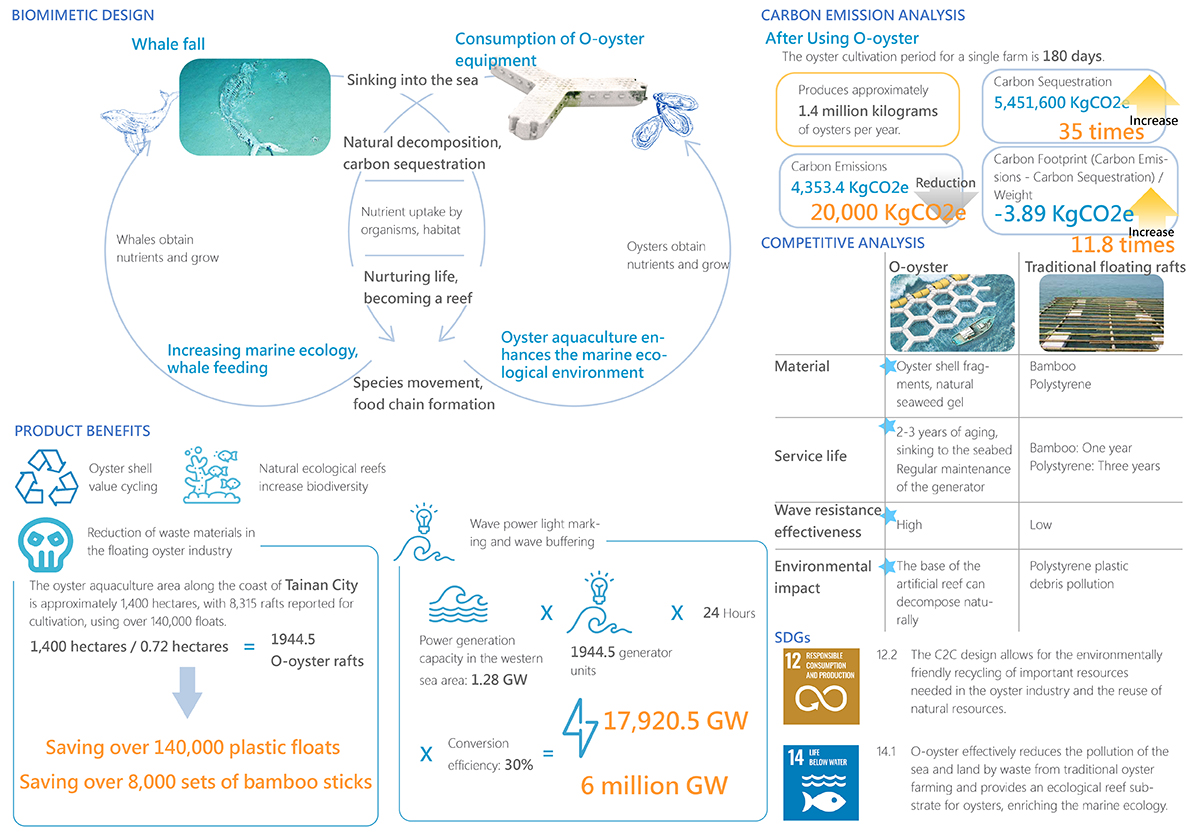
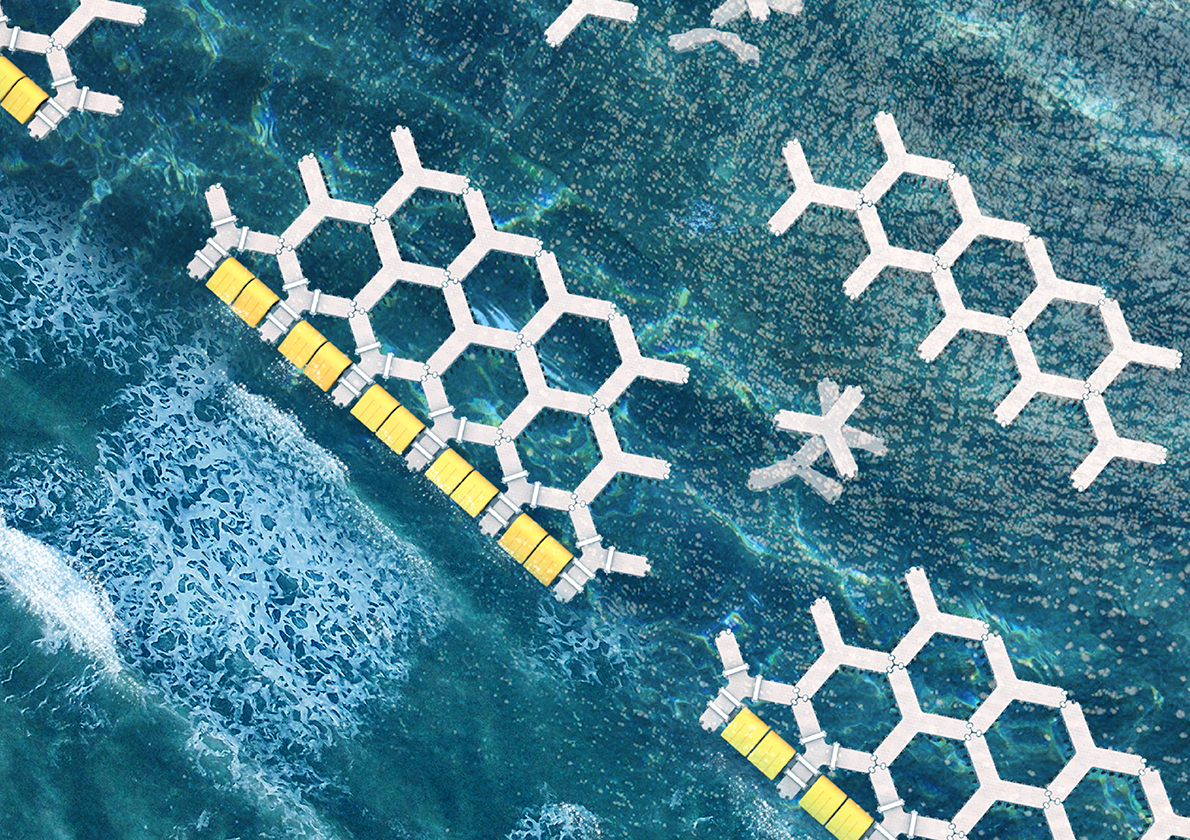
【Prizes|獎項】Golden Award|金獎,WDO Sustainability Award|WDO特別獎
【Country/Region|國家或地區】Taiwan|台灣
【Group/Designer|設計團隊/設計師】National Taipei University of Education (NTUE) / Ming Chi University of Technology (MCUT)|國立臺北教育大學 / 明志科技大學:
Sin Yu Lin|林欣妤, Yun Jhen Wu|吳昀蓁, Wen Shin Zeng|曾玟心, Yin Chi Liu|劉音棋, Prof. Li Kai Chu|李鍇朮
【Description|作品介紹】
O-oyster is a versatile platform that serves both as an oyster aquaculture system and a wave power generator, embodying a cradle-to-cradle approach. The main structure of O-oyster is crafted from oyster shells and seaweed gel. When damaged, it can be deliberately sunk to the seabed, functioning as an artificial reef to foster diverse marine life. Over time, it gradually decomposes, addressing the environmental concerns associated with traditional aquaculture materials like plastic, styrofoam, and ropes. O-oyster can be assembled into offshore oyster farming fields, allowing oyster farmers to conduct cultivation activities either from boats or by walking on the O-oyster platform. Additionally, it can be equipped with duck-bill-shaped wave power generation devices, effectively mitigating damage to the aquaculture zone caused by large waves. This expansion of oyster fields helps meet the demand for stable sea current oyster farming in deeper waters.
1. Circular Materials Repurposed oyster shells reduce pollution and enhance marine habitats, decomposing naturally. This reduces pollution from traditional oyster farming and incineration. 2. Cradle-to-Cradle Systemic Thinking O-Oyster, made from oyster shells and alginate, acts as an ecological reef and generates coastal electricity with wave power devices, minimizing wave damage and energy waste.
O-oyster是座具搖籃到搖籃思維的牡蠣養殖與海浪發電平台。
O-oyster主體採牡蠣殼與海藻膠製成,損壞時可沉入海底成為生態礁孕育海洋多樣生物,並隨時間逐步分解,改善過去養殖業使用塑膠、保麗龍、繩索造成的廢棄物問題。
O-oyster可組建成海上牡蠣養殖田,蚵農可在船上或行走於O-oyster上進行養殖作業;並可外裝點頭鴨式波浪發電裝置,有效減低大浪所造成的養殖區破壞,擴大牡蠣田分布,達成深水區需穩定海流養殖牡蠣的需求。



